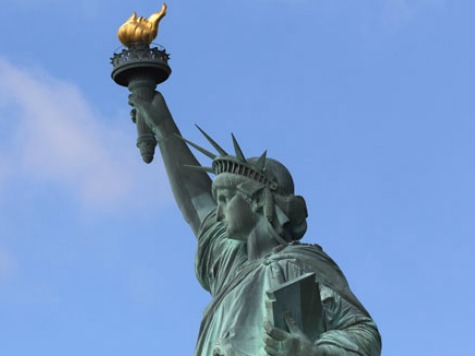
A new report out this week finds that Chinese immigrants comprise the second-highest immigrant population in New York City after Dominicans from the Dominican Republic and, should numbers hold, will be the biggest immigrant population in the most populous city in America.
The latest installment of the semi-regular Newest New Yorker series covers 2005 to 2013 and shows a major change in the city’s immigrant population: immigrants from Asia–China in particular–threatening to overtake Latin Americans as the largest foreign-born group. According to the report, China has taken the crown from the Dominican Republic and topped the list of countries with the most new admitted immigrants to the city. It is in second place to the same country in the general foreign-born population, with many of the numbers working in the Dominican Republic’s favor being legal permanent residents who have been in New York City for decades.

The study notes that the city’s Dominican population has increased 3% in the last ten years while the Chinese population increased by 34%. “If these growth rates hold,” the report suggests, “the Chinese would likely be the city’s largest immigrant group in the next few years.” Rounding out the top three groups was immigrants from Mexico, the country with the largest immigrant population nationwide (China holds second place in these rankings, as well).

The study cites a number of factors from immigrant visas to asylum requests to families reuniting in the States for the sudden boom. Beginning with the Chinese Student Displacement Act of 1992, large numbers of Chinese students received employee visas that helped them remain in the U.S. temporarily. That number, the study notes, ebbed but was steadily replaced by a large number of asylum seekers who received a place in the United States.
Since the turn of the century, about 72,000 migrants made their way from China to New York City, “virtually all of whom” received asylum status. Nationally, immigrants from China maintained second place rank in number of successful asylum requests, bested only by Cuban immigrants. Currently, the report found 40% of Chinese immigrants have asylum status.
The other major contributing factor to the increase in Chinese immigration is the successful requests for relocation based on having family already in New York City. This makes sense: the more Chinese are admitted into the United States, the more relatives in China have someone to vouch for them here, creating a compounding effect on the number of Chinese immigrants newly admitted to America.
The Newest New Yorker Series began in 1992, publishing regularly but without a particular schedule. This year’s report is replete with fascinating information about the radical shifts in population the city experiences, noting that the city has its highest immigrant population percentage today since 1910. It also cites the city as unique in the variety of its immigrant population, being one of the few places in the country with significant populations from Guyana, Bangladesh, and other countries not strongly represented on a national scale.
This immigration boom is no fluke, either, but the work of more than a decade of the Bloomberg administration which has openly supported immigrants and called for immigration reform. Mayor Bloomberg went as far as to call the absence of immigration reform “national suicide” on the Fusion network last week, urging Congress to make it safer and more legal for immigrants to come into this country.
His successor, Bill de Blasio, has also called for easing immigrant detention procedures, supports the DREAM Act, and has proposed offering all immigrants, legal or not, government identification–ensuring that the city will continue to attract surging numbers of immigrants beyond Bloomberg’s tenure. Whether that will affect the Chinese population remains to be seen, however, given the high percentage of Chinese cited as immigrants in the study who are in actuality political refugees, a population not prone to luring to the city just for economic benefit.
You can read the full report on New York City’s website here.

COMMENTS
Please let us know if you're having issues with commenting.